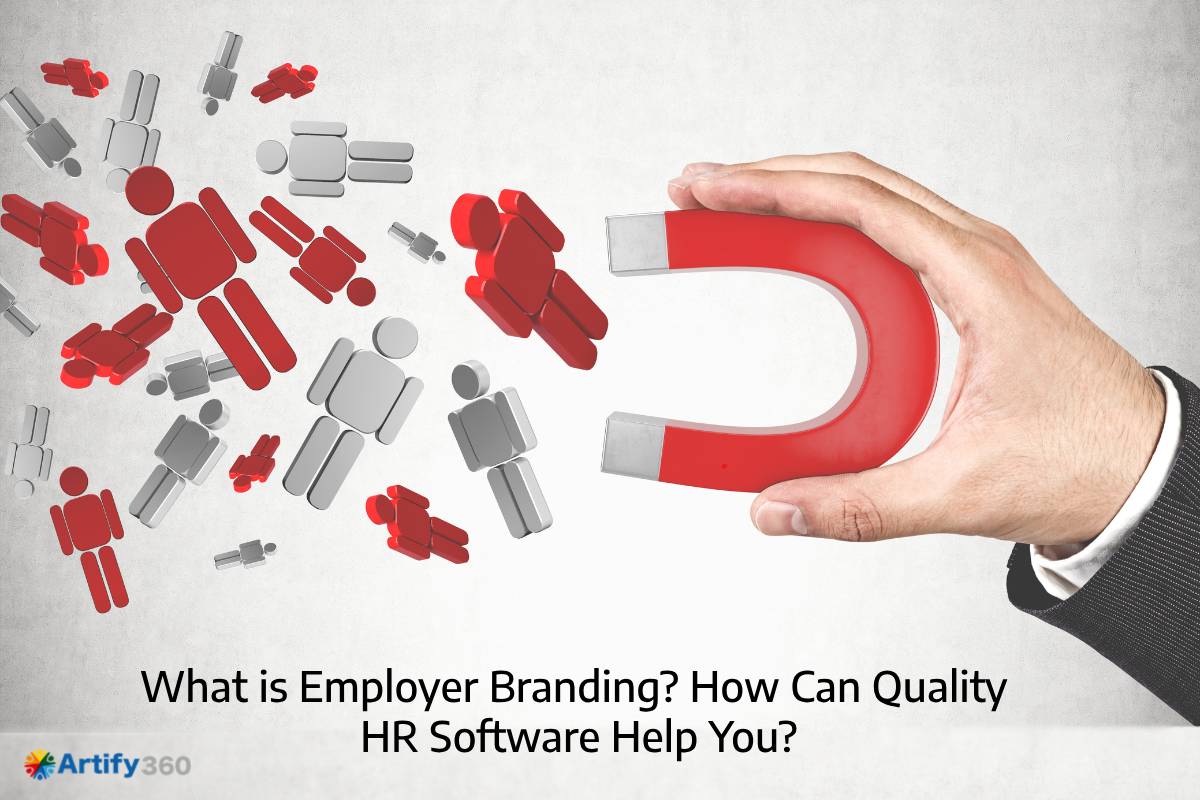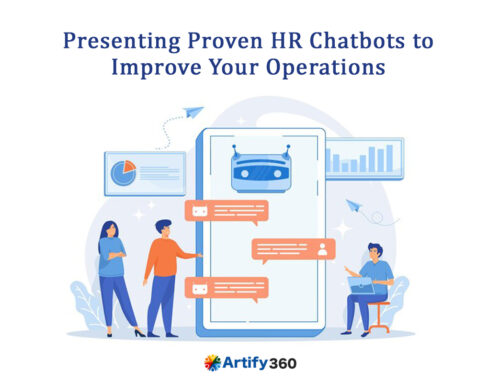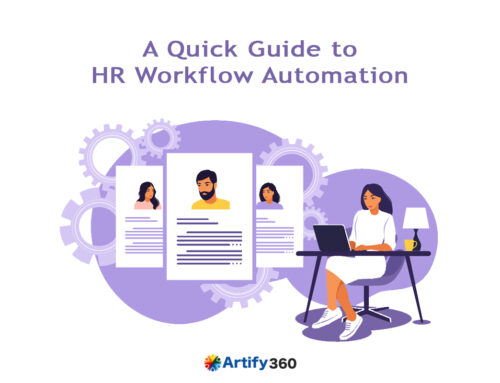You are well aware that customer ratings and client reviews play a huge role in the branding/marketing values of an organization. However, with changing times, satisfaction related to organizations is perceived more from the eyes of the employees than customers. This is where the concept of employer branding becomes relevant.
Employer branding is simply the valuation and reputation that you have among potential job seekers in the organization. Existing and former employees create this index. Future employees have more significance for this model than the previous ones and your customers.
Going forward, employer branding will become a milestone measure for organization branding. Reports show that nearly 90% of job seekers and potential candidates aim to measure the employer brand before proceeding with further steps.
This article features the significance of employer branding along with its benefits. It also lists how an HR and payroll software system can guide your company in fulfilling employer branding objectives.
Features & Benefits of Employer Branding
The major features that distinguish employer branding as a performance metric you should consider are listed below.
Clear value proposition – Employer branding offers a crystal clear picture of the value proposition to companies using the feature. Though this is mostly identified with an organization’s customers, employer branding is the one that fulfills it for the staff segment of the business.
Transparent environment – Employer branding opens the route for feedback from workspace employees and vendor partners of the company. This is significant because it helps businesses receive appropriate feedback from their human capital resources.
Open space for communication – Employer branding opens up the route for direct and internal communication networks between the employees of the company and their authority counterparts. It enables you to receive sufficient information and feedback on the organization’s treatment of its employees.
Talent management – Management of talent from the initial search and acquisition stage until the retention phase can be easily monitored and maintained with an employer branding principle in motion.
Scope for market survey – Usual market surveys analyze and respond to the voice of the customers. In research involving staff resources, the overall approach and flow of the survey changes to accommodate employee welfare.
Sustainable business practices – Employer branding holds one of the keys to maintaining a sustainable competitive advantage in the marketplace. Organizations can opt for features like green initiatives, diversity, inclusion, etc., as part of their sustenance goals.
Top-notch HR services – With attractive employer branding initiatives in place, the quality of your HR solutions will go up. Automated HRMS modules can efficiently take care of employer branding services.
Career prospects analysis – With a full-fledged employer branding service, each employee can analyze their respective career prospects. It will enable them to select the optimum route, highlighting how they can grow as a professional.
Distinct business strategy – When you listen to your employees, a new area of business strategy opens up that motivates your employees and the organization as a whole to work towards that goal.
Trust-based research – You can trust your employees’ feedback if they are expressing themselves through a channel like employer branding. It will help collect actionable insights for the firm’s future. Ideal candidates for various job profiles will follow this trust matrix to its core.
Employer branding carries its own set of unique benefits that contribute greatly to the success of your business. The benefits of employer branding are as follows:
Positive work culture – Employer branding develops a system where employees get to communicate. They can truly express their feelings about their work environment. It can lead to a positive and strong company or corporate work culture.
Well-defined mission, vision, and company values – Your organization’s mission, vision, and core values are open for better-clarified definitions if the employee’s voice is also heard and appreciated.
Collective work toward a common goal – With employer branding, your resources can join forces with you to work for a greater organizational objective.
Excellent recruitment and retention functions – Consistent application of employer branding tasks within the firm is the right call to improve your primary HR functions like employee recruitment and retention.
Gathering of data and insights – Data and information collection is a scenario that is going to happen naturally in businesses. You can leverage such employee data with the assistance of employer branding.
Consistent and organized strategy – With employees’ feedback in the organization’s fray, you can devise a wholesome strategy that is both consistent and well-organized.
Better engagement – Employer branding helps increase employee engagement functions within your organization (both online and offline). Current and potential employees can use this choice for their professional development.
Boosts brand positioning – Branding is crucial for a modern-day organization’s progress. Employer branding activates the market positioning of an organization.
Creates compelling pros – If your organization’s ratings and reviews are positive after employer branding terms, it is one of the top draws under the merits segment of your marketing promotions.
Fine-tuned business prospects – Employer branding techniques open up the doors to delivering business prospects that are in alignment with the best market conditions at any moment.
How to Use HR Software for Employer Branding?
The necessity of employer branding is clear to you now. But what is employer branding in HR? It is even more significant to understand how automated HR solutions can aid you in achieving the same.
HRMS service is the best platform to aid in your company’s employer branding objectives. Dedicated HR software helps you record, analyze, and leverage numerous data objectives of a firm.
These data and information can be collected under the tag of HR metrics. It is the aforementioned specific performance indicator metrics that contribute to the employer branding efforts and goals.
Some of the preferred metrics that you can use in employer branding are employee turnover rate, employee retention rate, and professional engagement score. You can go for hiring process parameters as well.
These include the quality of employees, time needed to recruit and train, cost-efficiency, resource adaptability, etc. All these metric factors and more can be analyzed strategically with the support of a dedicated HR software system.
A few techniques to implement employer branding effectively are data visualization, core module integration, and centralized database management. With suitable HR software, you can feasibly use the data to perceive how your employees fare in the organization.
There is also space for developing a documented support system that encourages employees to open up about their work environment. It paves the way for discussions about work-life balance in the organization.
Build your HR system to listen to the employees, help them receive unique brand awareness, and focus on adding value to the work culture and employee engagement factors.
How to Build An Employer Branding Strategy?
A step-by-step strategy is highly recommended for a priceless goal like employer branding. Most CXOs (more than 70%) share concerns about the shortage of skills necessary to raise their company’s branding and positive impact.
Though each organization should follow a core strategy that aligns with its business model, the basic template is similar for many businesses. You need a base of satisfied employees to create a realistic impact on the organization’s business branding goals.
Here’s a short overview of the steps you can follow to create an employer branding strategy.
- Understand and evaluate your organizational needs first. Ensure that the path to lay out an employer branding strategy is clear.
- Define the key performance indicators under HR metrics you plan to evaluate. Match them with the company objectives.
- Distribute all types of resources to manage the organization’s procedure that aims at potential employer branding tactics.
- Create recruitment process and retention pointers that sync with the company model or structure.
- Up next is the execution of employer branding. First, you have to determine the distribution channels, branding materials, and employee personas for this.
- Implement the employer branding strategy by testing your routine messages. Potential applicants can contribute to this step splendidly.
- Follow up on the messages and take corrective action if necessary. Follow A/B testing to finalize the same.
- Repeat the testing process and implementation steps until you arrive at an optimum solution strategy.
Can Artify 360 HR Software Assist You with Employer Branding Objectives?
Yes. Artify 360 cloud HR software can assist you with your employer branding goals. It is not about sharing a direct module for connecting to the specific function. However, it is regarding the coming together of multiple HRMS segments to deliver optimum employer branding strategies for the firm.
Artify 360 is an essential automated HR software system that is good at holding together the core HR functions of your organization. It will reward you with incredible employee loyalty and engagement experiences that reflect in the business growth. You can consider the free HR software for Bahrain that will boost your branding quotient with this specific function.
You can reach out to the in-house team at Artify to get the best solutions in the employer branding service. The dedicated HR payroll software offers you the option for demo sessions as well.






